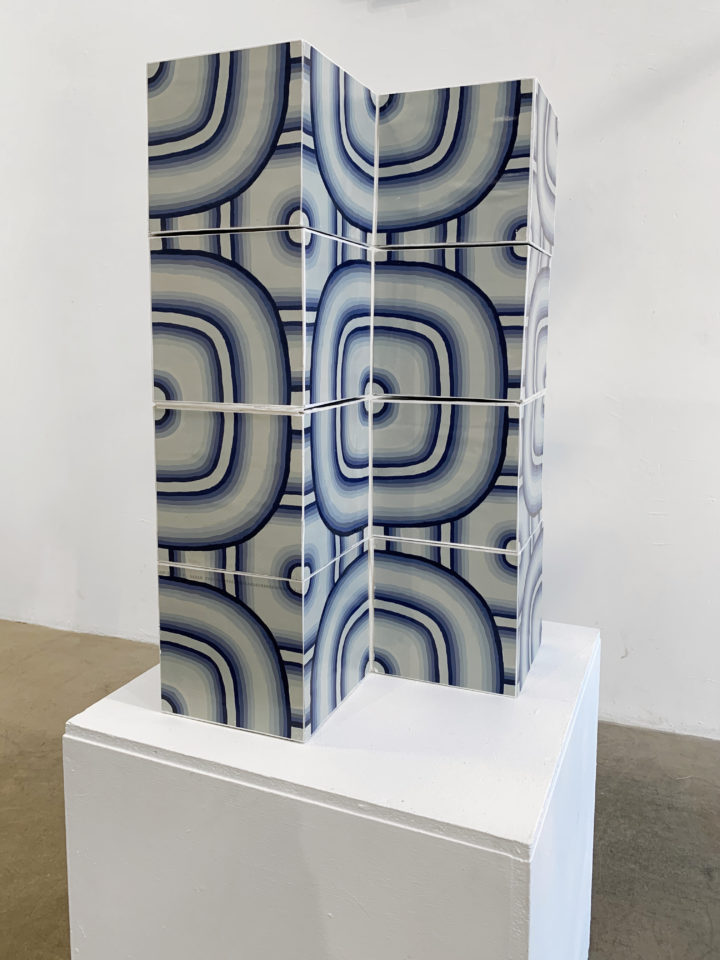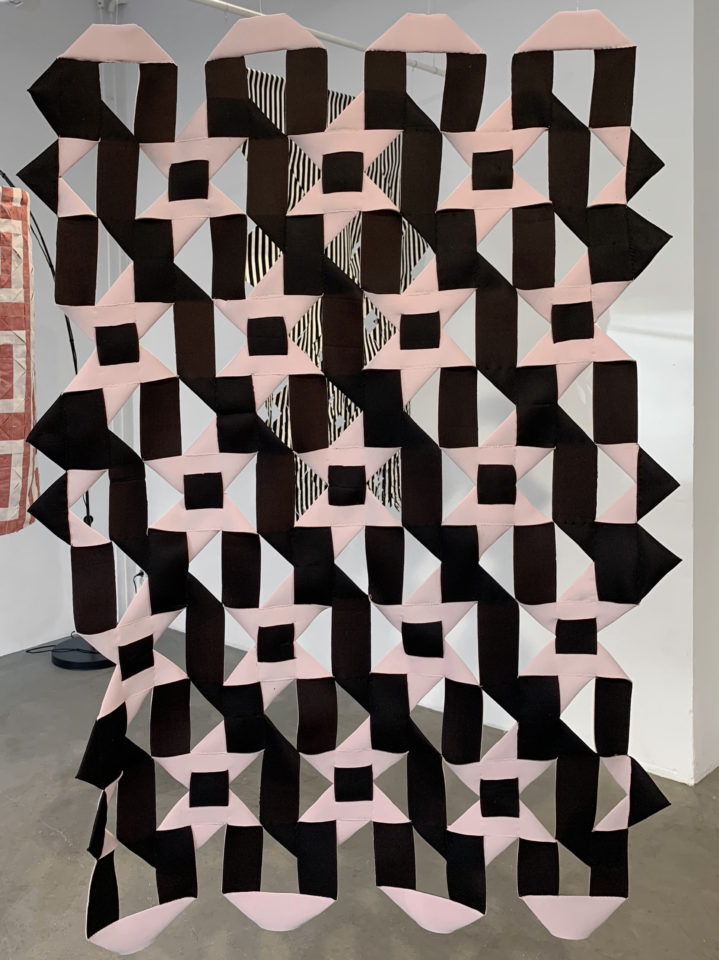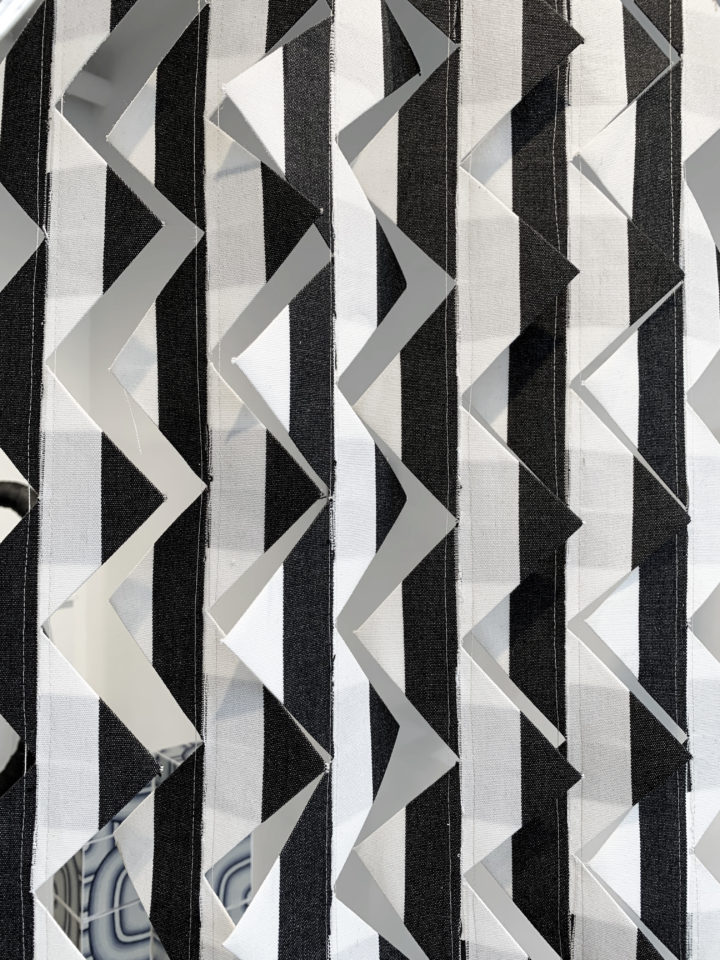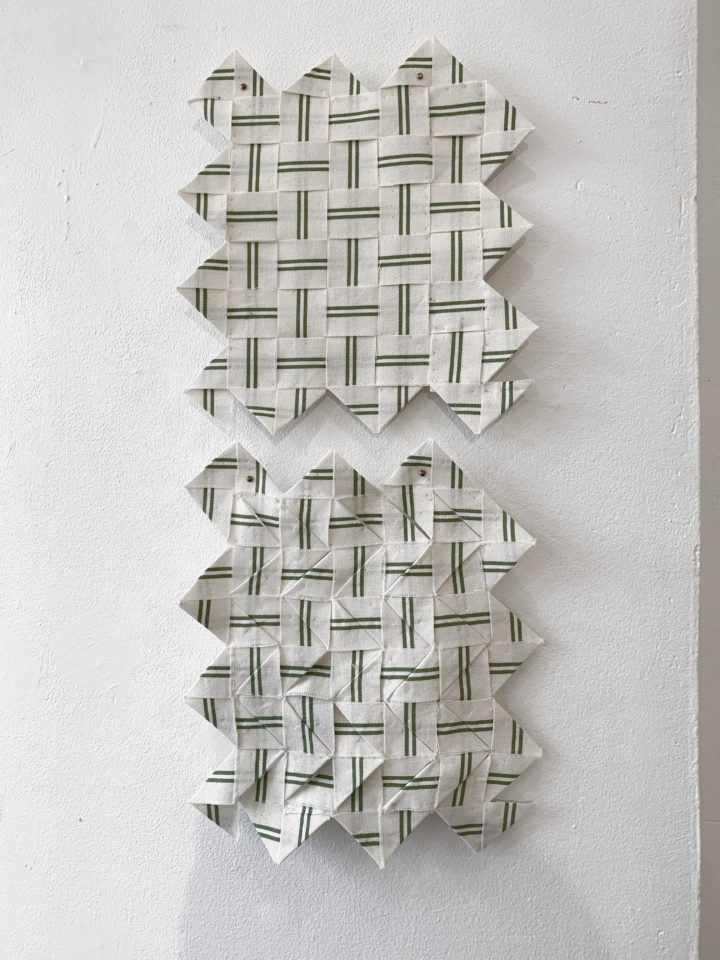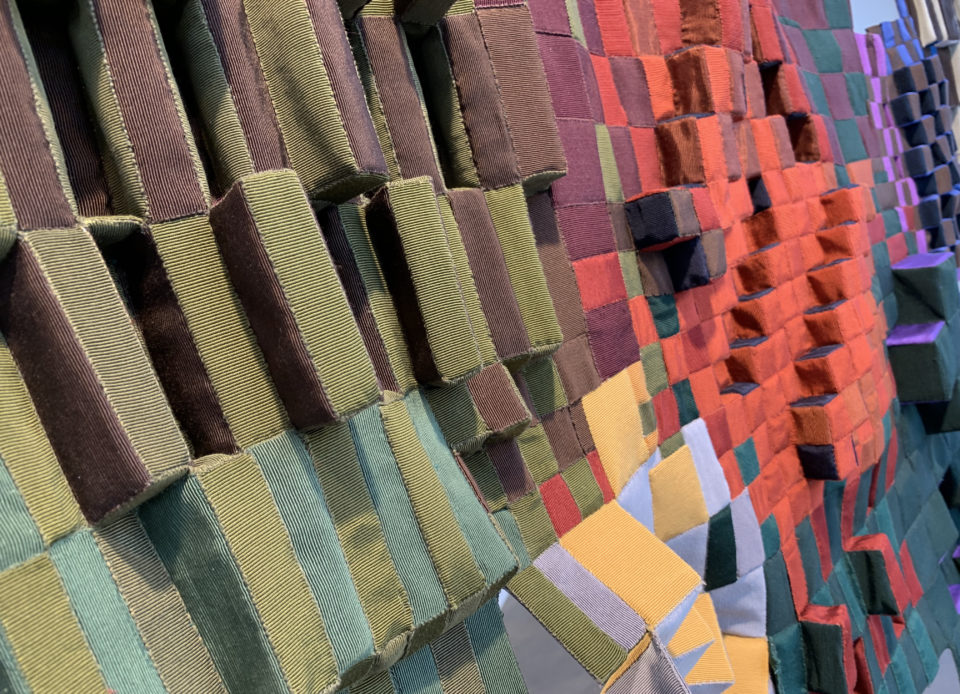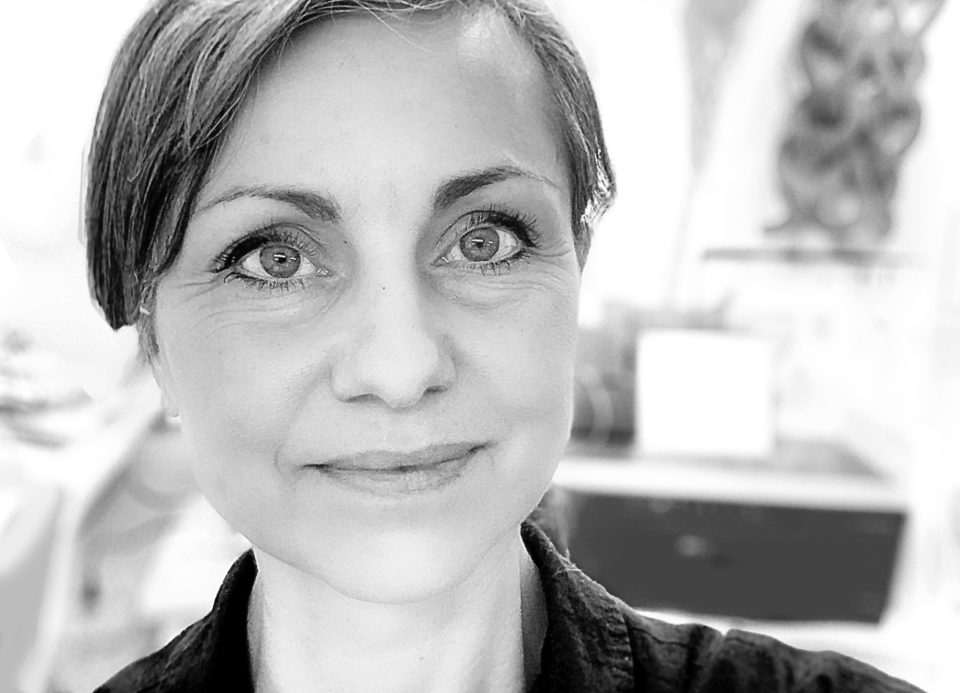Katarina Brieditis
—A textile is never one-sided. It has a backside, a materiality and several dimensions. Inside the textile is the construction of bindings that brings one side to the other, locks in place and holds together. The construction itself can be seen as a metaphor for the fact that there is always another side to what we see and perceive. Every thread matters and has the possibility to change the whole construction. Repetitions clarifies and give character; something that could be useful, or alternatively, important to break.
One example of Katarina Brieditis’ point of departure is the knitted stitch that row after row binds itself, like a symbol of eternity. But so fragile. One dropped stitch and everything falls apart. The stitches build a textile where the back is dependent on the front. A two-sided coexistence, a “both-and”, different but equally true.
Repeat and unravel; a construction according to the principle of the stitches, but instead of yarn, Brieditis uses a flat material; a paper or piece of fabric in strips. The flat strips make the sides come closer together and the binding points where the stitches dive from one side to the other become clearer, more distinct. Due to the inelasticity of the flat bands, the meshes are transformed into stylised shapes – which together form patterns. She investigates how she can control the two-sided pattern images and develop them into new, two-sided textiles. At Fiberspace, Brieditis will, among other things, show that these patterns can change direction or become a reflection or negative of themselves on the different sides.
I have experienced actual “Eureka”-moments when I have discovered new dimensions in technical constructions and how to use them. And some sublime and wonderful moments travelling with the Re Rag Rug-project.
